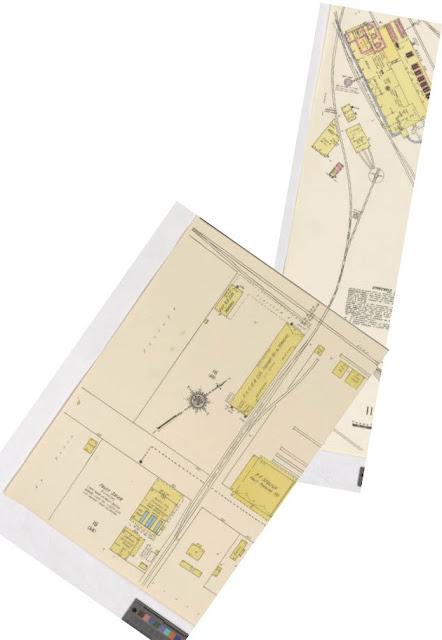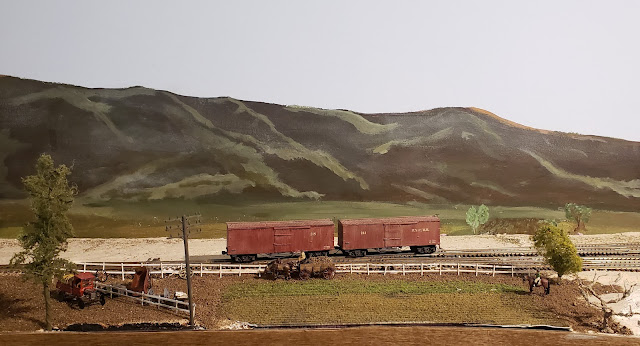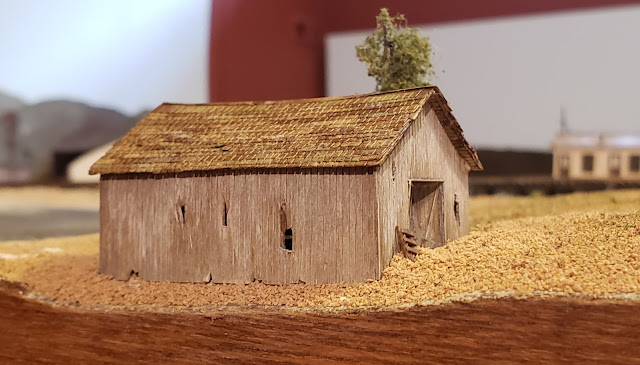Like an Onion
Part I, construction, can be found here.
Part II, decals, can be found here.
Part III - Finishing of PVCRR #220
When we last met, #220 had just received new decals, and a spray of Dullcoat to seal them in. The next steps all blurred together somewhat, but I'll try to hit on everything I did to get to this point.
Before we get to the weathering, I wanted to touch on the coupler options I was debating. I was considering traditional N scale, Z scale, or Micro-Trains' new True-Scale couplers. The rest of my cars have a mix of various N scale couplers.
Micro-Trains - N Scale truck mount / Z, Nn3 body mount / N Scale - True-Scale body mount
|
As you can see above, the True-Scale couplers look much better and are noticeably smaller than even the Z scale coupler. Unfortunately, they do not work with non-True-Scale couplers, and I am not prepared to swap out all of my couplers at the moment. The Z/Nn3 couplers are slightly smaller than the standard N scale couplers, and will work with the N scale couplers, so I can incorporate those into new cars, knowing they will work with my existing equipment. For #220, I opted for the Z/Nn3 couplers.
True-Scale on left, Z/Nn3 on right
|
I wouldn't be surprised if at some point I changed to strictly True-Scale for the new layout. I think they look great. I suppose nothing is stopping me from using a car with the two different couplers on either side as a conversion car, and putting the True-Scales on these new PVCRR cars that I am building...
Now onto weathering -
I'm planning on modeling the PVCRR in the 1930s. In reality, it was sold to the Southern Pacific by this point, and no longer in operation. In my world, it is still running, though the majority of the equipment is from the railroad's infancy, 30+ years ago. The railroad also operated along the California coast, where damp salty air is common. These cars, while functioning, will look far from new.
Most of my weathering utilizes the same processes - drybrushing, washes, highlighting - on repeat. I think it is important to emphasize how often this is repeated. The real world isn't weathered in one pass - paint doesn't chip evenly, metal doesn't rust uniformly - and our models should reflect that. To create this on my models, I use each color, each method, multiple times until I feel satisfied with the result. This creates a hodge-podge of streaks, dust, rust, and dirt.
This car was drybrushed with the following colors:
Model Master Dark Tan Enamel
Model Master Roof Brown Acrylic
Model Master Grimy Black Acrylic (trucks, underbody)
Testors Flat Rust
Tru-Color Paint PRR 1948 Pass. Car Tuscan
The lettering on this car started white. I wanted to tone it down a bit, so I used a very light drybrushing of the base body color. I wanted to create the effect of the white paint having faded over time, allowing the red of the car body to show through.
My art degree forgot to remind me that White + Red = Pink, rather than the faded white I was looking for.
I literally went to college to study painting, colors, and all of that, and I was not anticipating this result.
It took a few tries before I felt comfortable with the results. I eventually thinned the red down, and then drybrushed that over the lettering.
It took a few tries before I felt comfortable with the results. I eventually thinned the red down, and then drybrushed that over the lettering.
From there, I continued to drybrush the various colors over the model. The underbody was painted Roof Brown before being drybrushed with Dark Tan and Rust. After a pass with one color, I would go over again with another, and repeat this pattern, making sure no one color was too intense in any area. I also applied a wash of India Ink/Alcohol (the ratio I used is lost to time at the point) to highlight the details. This warped the wood I had used on the roof of the car, that was easily fixed with some super glue.
Finally, the completed model was given a spray of Dullcoat to seal the weathering.
At the end of the day, I think it is important to approach weathering a freight car, especially an older one, in the same way you approach scenery - layers upon layers upon layers.
At the end of the day, I think it is important to approach weathering a freight car, especially an older one, in the same way you approach scenery - layers upon layers upon layers.
Like an onion.
Products Used:
India-Ink/70% Alcohol wash
Micro-Trains - True Scale Couplers #1300
Micro-Trains - Z/Nn3 Couplers #903
Micro-Trains - Truck Mounted Couplers (came with the car, not sure what number it is)
Model Master - Dark Tan Enamel
Model Master - Roof Brown Acrylic
Model Master - Grimy Black Acrylic
Testors - Dullcoat Lacquer
Testors - Flat Rust Enamel
Tru-Color Paint - PRR 1948 Passenger Car Tuscan














Comments
Post a Comment